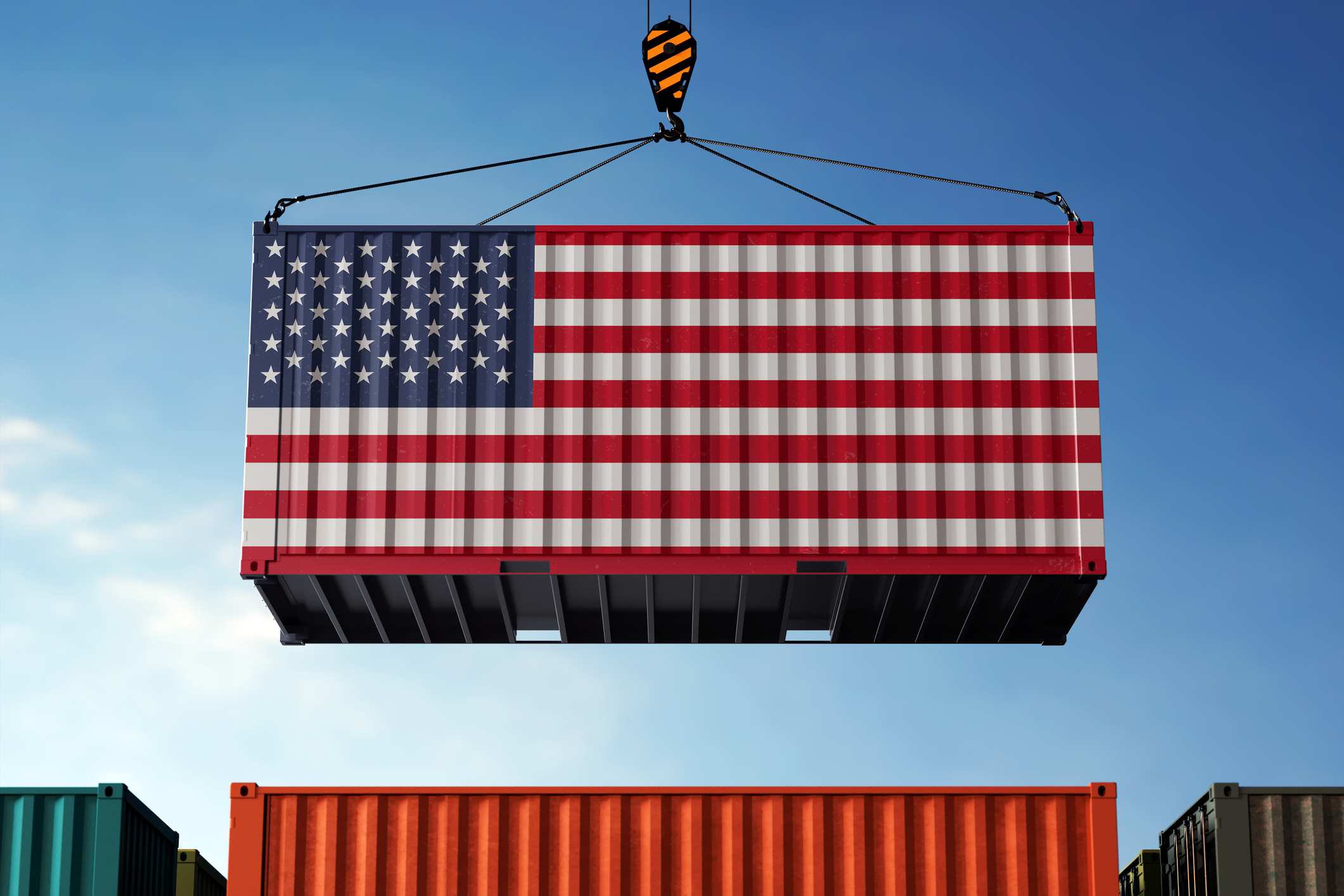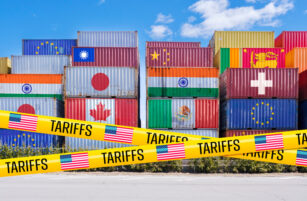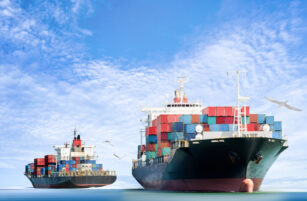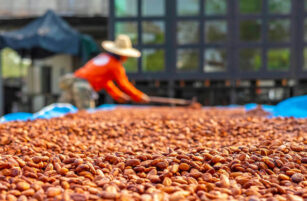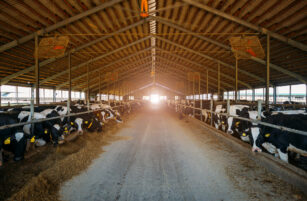Insight Focus
Liberation Day has arrived. President Trump’s new tariffs on almost every country in the world threatens to upend global trade. But how are the measures going to impact the food supply chain?
The Tariffs in Brief
The long awaited US “Liberation Day” promised by President Donald Trump arrived late on Wednesday, spelling out a raft of new tariffs on virtually all countries importing products to the US. This was done under the International Emergency Economic Powers Act of 1977 (IEEPA).
A baseline tariff of 10% has been applied to all countries, and further amounts have been added to those with the biggest trade imbalances with the US, “confronting the unfair tariff disparities and non-tariff barriers imposed by other countries,” the administration said in a briefing.
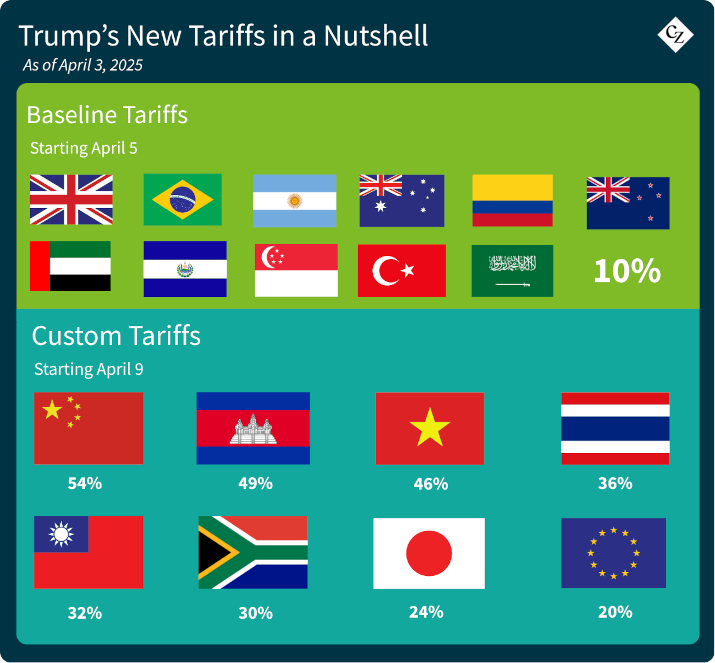
There have been question marks over how the tariffs have been calculated, with some suggesting that the administration has used the trade deficit to calculate what it calls tariffs charged to the US. For instance, the US’ trade deficit with China is USD 291.9 billion, while imports from China are USD 433.8 billion. Dividing the trade deficit by the import bill give 67% — the tariffs the administration claims China imposes on US imports.
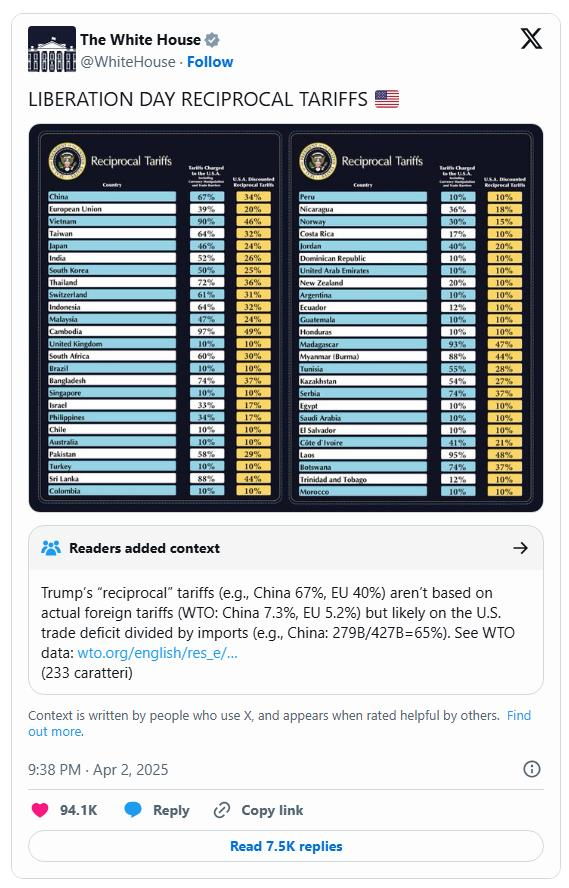
The administration has then imposed what it calls “discounted reciprocal tariffs” of half the calculated amount, at a minimum of 10%. In China’s situation, then, it is subject to 34%, plus the existing 20% blanket tariffs that were imposed last month. This means the Asian nation is subject to a net tariff rate of 54% on all US imports.
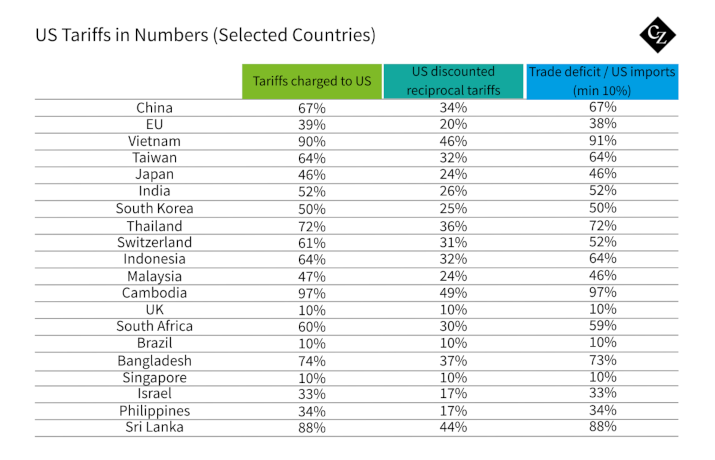
The baseline tariffs will take effect on April 5, while the custom tariffs will come into force on April 9. Some countries are still positive they may be able to negotiate lower rates, although others have already threatened retaliatory action.
Exemptions to the Rule
USMCA
Some countries and products have been exempted from this new round of tariffs. Firstly, USMCA countries Mexico and Canada are not subject to the new rates, but the 25% levies on auto parts, steel and aluminium already imposed will stay in place.
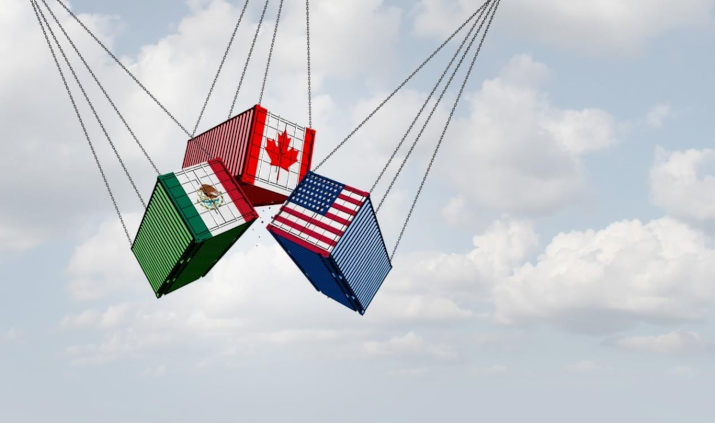
These tariffs were placed on the North American countries as punishment for failing to curb migration and fentanyl trafficking, according to the US administration. However, Canada and Mexico could still be punished further if these issues worsen.
“In the event the existing fentanyl/migration IEEPA orders are terminated, USMCA compliant goods would continue to receive preferential treatment, while non-USMCA compliant goods would be subject to a 12% reciprocal tariff,” the fact sheet said.
In addition, energy and potash will see a 10% tariff, as the Trump administration says these goods are non-USMCA compliant.
Canadian Prime Minister Mark Carney adopted a cautionary tone, saying the tariffs will negatively impact both the US and Canadian economies and will “fundamentally change the global trading system.”
Canada began mulling retaliatory tariffs on US ethanol after the first round of tariffs came into force in March. Canada accounts for 35% of US ethanol exports, while the UK and EU represent a further 23%, according to the Renewable Fuels Association. This places US corn farmers squarely in the firing line for reciprocal tariffs.
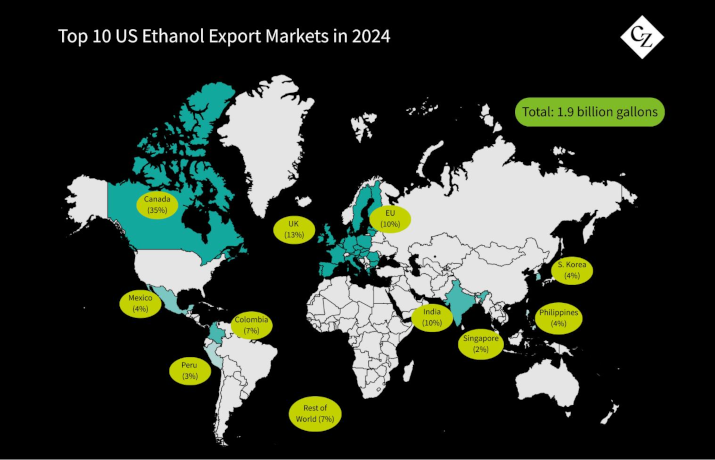
Source: RFA
Ukraine-Russia
Another nuance of the system is that, while these tariffs have been applied to Ukraine at the base rate of 10%, no levies have been imposed on Russian or Belarusian exports to the US. White House spokesperson Karoline Leavitt said that this was because these countries are already subject to economic sanctions. Other sanctioned countries Cuba and North Korea were also omitted.
The Ukrainian Economy Minister Yuliia Svyrydenko voiced optimism that the country could negotiate better conditions with the US and said the new levies were “difficult but not critical”.
Product Exemptions
There are some exemptions in terms of product categories. Energy, steel, aluminium, copper, pharmaceuticals, semiconductors, gold and lumber are all exempt from the tariffs. Many plastics, including PLA and PET are exempt from tariffs.
While ethanol and biodiesel are included in the tariffs, renewable diesel and SAF are exempt.
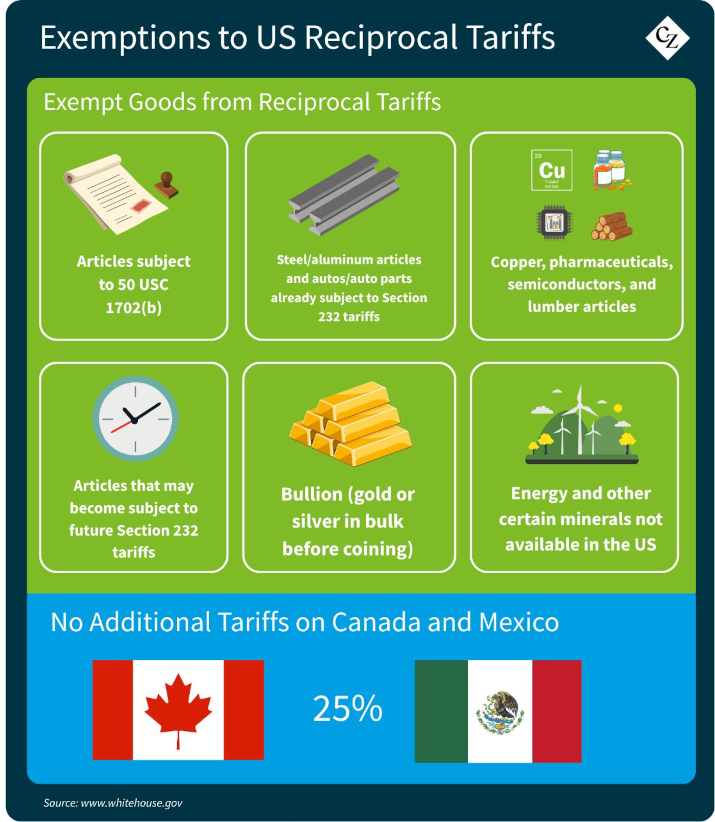
What Are the Impacts?
While there has been a lot of speculation over the tariff impacts, they are extremely difficult to quantify. Several countries on the receiving end of US levies will likely impose their own reciprocal tariffs. European Commission President Ursula von der Leyen said the bloc was “prepared to respond” to the measures.
According to the Office of Economic Complexity, the US’ total exposure to food and animal product exports is USD 173 billion, which is about 0.6% of its GDP.
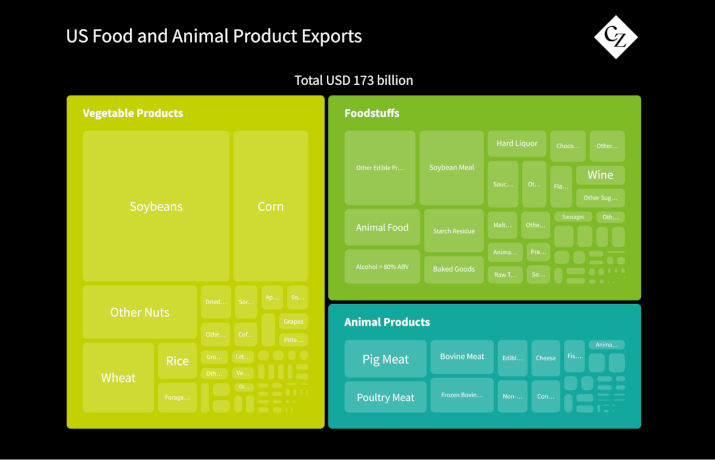
Source: OEC
Two US food exports stand out: soybeans and corn. Soybeans are the country’s largest food product export, valued at USD 27.2 billion. China accounts for over half of these volumes at 56%.
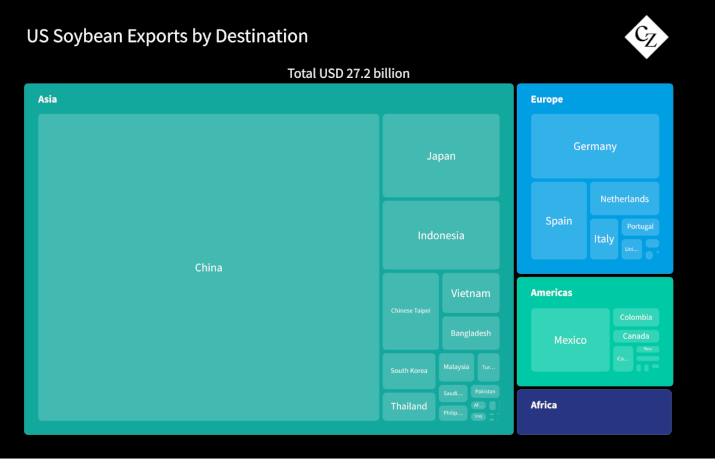
Source: OEC
Since Trumps’ first term, China has moved its soybean procurement away from the US to Brazil – and this trend is likely to continue as China vowed to fight back against the tariff measures. “China firmly opposes this and will resolutely take countermeasures to safeguard its own rights and interests,” the Ministry of Commerce said.
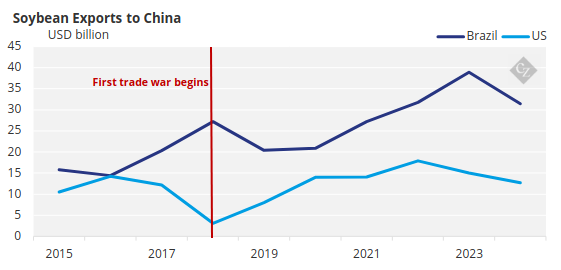
Source: Comex and USDA
Another major agricultural export for the US is corn. Of the USD 14.4 billion in total exports, Mexico accounts for 36.6%, Japan for 16.1% and China 15.4%.
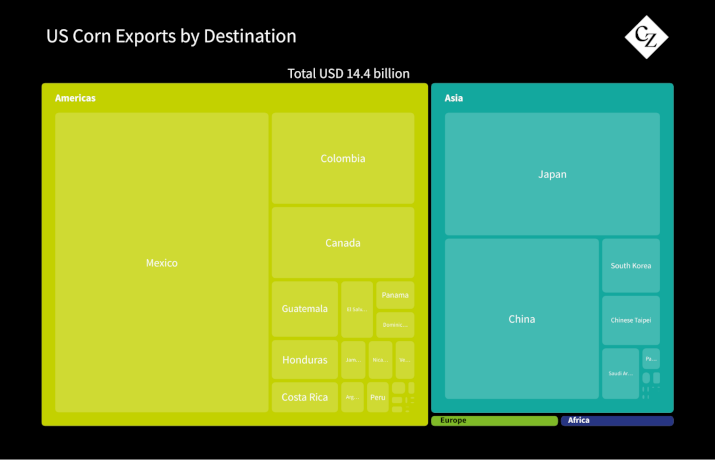
Source: OEC
Although Mexico escaped further tariffs this time, it is still subject to those on steel, aluminium and auto parts. President Claudia Sheinbaum has taken a measured approach, saying the country won’t go “tit-for-tat” on tariffs, although she stopped short of ruling out the possibility of taking action.
Europe
Europe faces significant challenges, with the EU targeted by a 20% tariff. European Commission President Ursula von der Leyen has called this move “a major blow to the world economy” underlining the potential disruptions to global trade.
Agricultural trade flows could be particularly affected. For instance, the EU imported 5.6 million tonnes of US soybeans last year for animal feed and biofuel production. If the EU responds with retaliatory tariffs, these trade flows could be at risk. Higher costs on US agricultural products could make them less competitive in the European market, forcing European manufacturers to seek alternative sources, potentially at higher prices.
In addition to the EU, the UK is also impacted by the new tariffs, facing a 10% baseline tariff. Prime Minister Keir Starmer has admitted that these tariffs will damage the UK economy, and while he remains optimistic about reaching a trade deal with the US, Starmer has not ruled out the possibility of the UK taking retaliatory measures against the US.
China
China has effectively been hit by a tariff rate of 54%, with the US adding 34% to the existing 20% tariff. This substantial increase in tariffs is likely to escalate trade tensions between the two largest economies in the world.
According to UN Comtrade, US imports from China amounted to USD 462.62 billion in 2024, up from USD 448 billion in 2023 but still a significant decline compared to USD 576 billion in 2022.
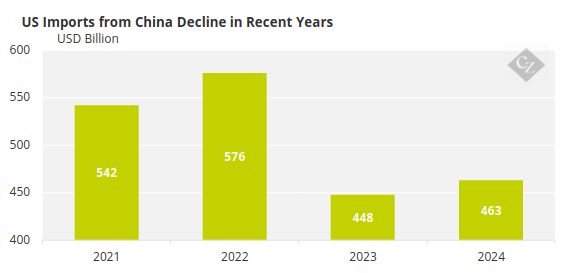
Source: UN Comtrade
China, with a population of 1.4 billion, is the world’s largest importer of agricultural goods and the second-largest economy globally. In 2024, China imported USD 29.25 billion worth of US agricultural products, a 14% decrease from the previous year, extending a 20% decline observed in 2023.
With the US’s new tariffs against China in place, this downward trend in trade could continue, as higher costs on Chinese imports may further reduce demand in the US, while Chinese manufacturers face growing pressure to absorb costs or shift focus to alternative markets.
Brazil
Brazil is among the countries affected by the new 10% baseline tariff imposed by the US. While this rate is relatively low compared to the 46% tariff applied to Vietnamese goods, it could still have notable effects on global coffee trade. Brazil is the world’s largest producer of arabica coffee, while Vietnam dominates the robusta market, which is used in instant coffee and espresso blends.
With Vietnam facing a much higher tariff, Vietnamese coffee will become less competitive in the US market, potentially shifting demand toward Brazilian suppliers. However, Brazil’s coffee exporters may not be able to fully replace Vietnam’s robusta supply, as global coffee markets have already been experiencing volatility due to adverse weather and supply chain disruptions.

While this shift could benefit Brazilian producers in the short term, the economic impact of US tariffs may still create uncertainty in trade relations. As coffee prices have already soared due to supply constraints, additional tariff-related disruptions could add to market volatility.
India
India has been hit with a 26% tariff under the new US trade measures, which could impact its exports. Until recently, the US was India’s largest trading partner, with bilateral trade reaching USD 190 billion. Indian Prime Minister Modi and President Trump aimed to double this to USD 500 billion, with both sides committed to agreeing a trade deal by autumn 2025.
Agricultural trade between the two countries is modest at USD 8 billion, with India exporting rice, shrimp, and other products, while the US exports almonds, apples, and lentils. Washington has sought to expand sales of wheat, cotton, and maize to reduce its USD 45 billion trade deficit with India.
The US has previously accused India of being a “tariff king,” pressuring Delhi to reduce duties on American goods. Now, with these new tariffs, India’s agricultural exports could face more barriers, slowing trade growth and complicating negotiations for a future deal.
